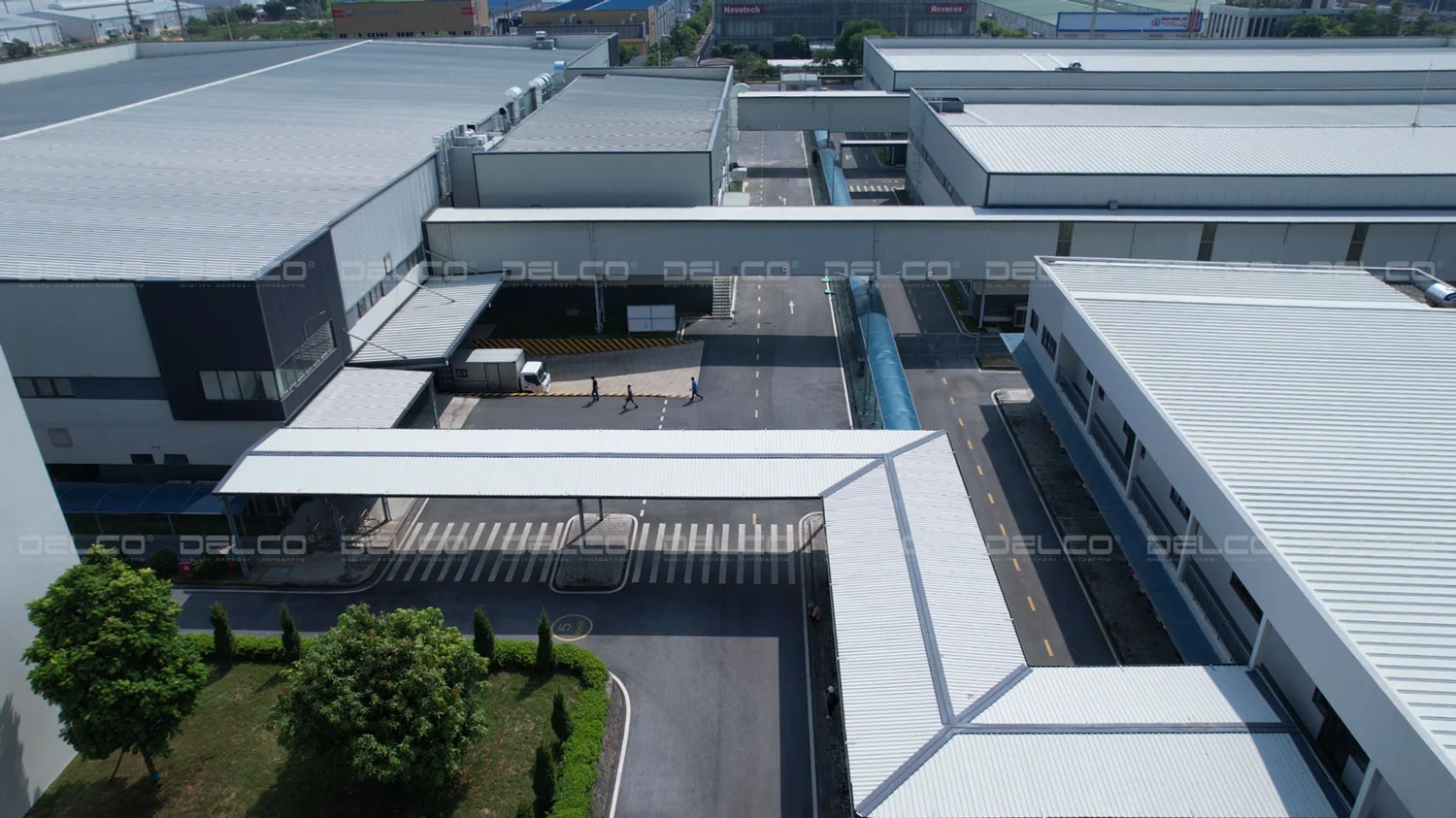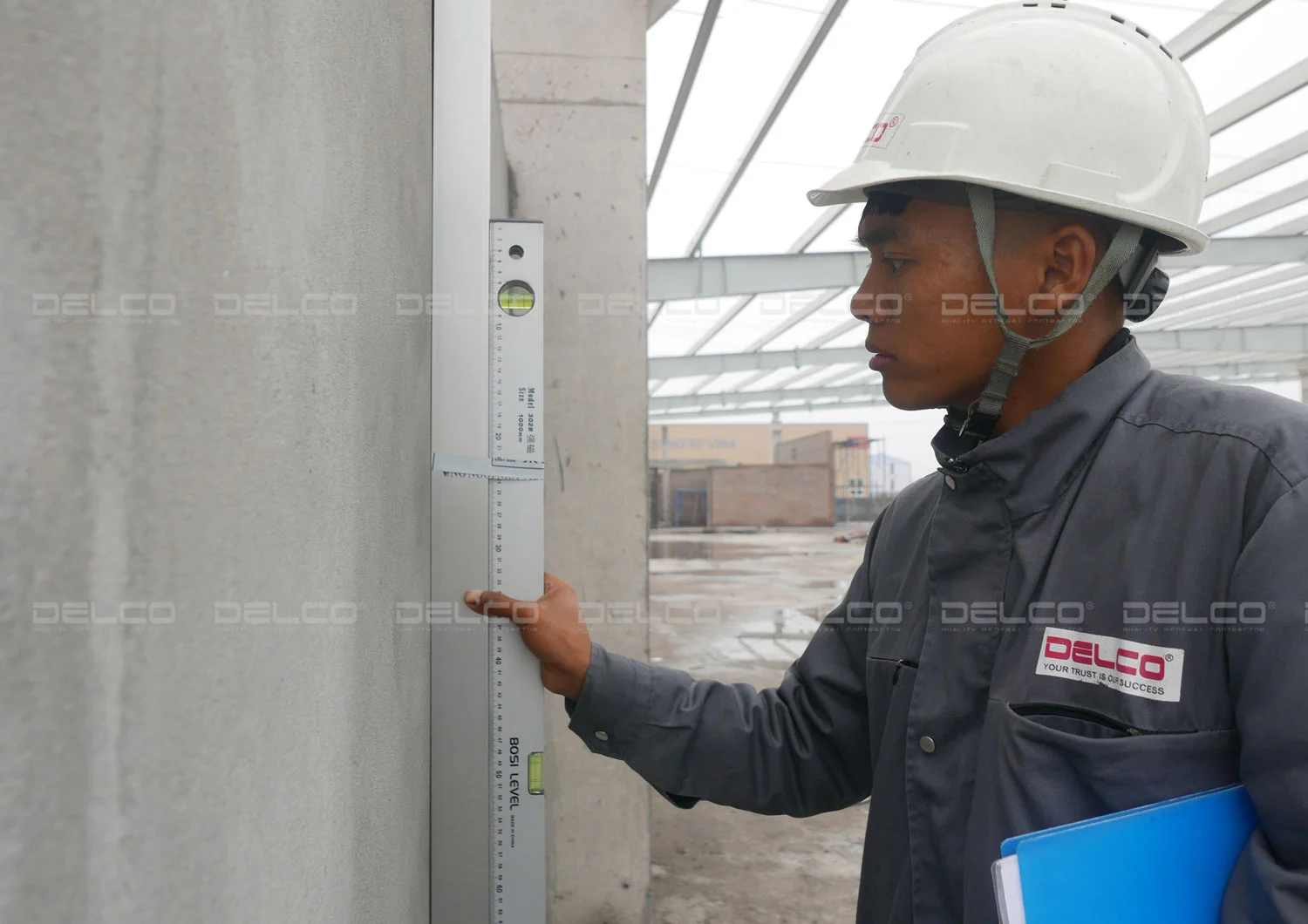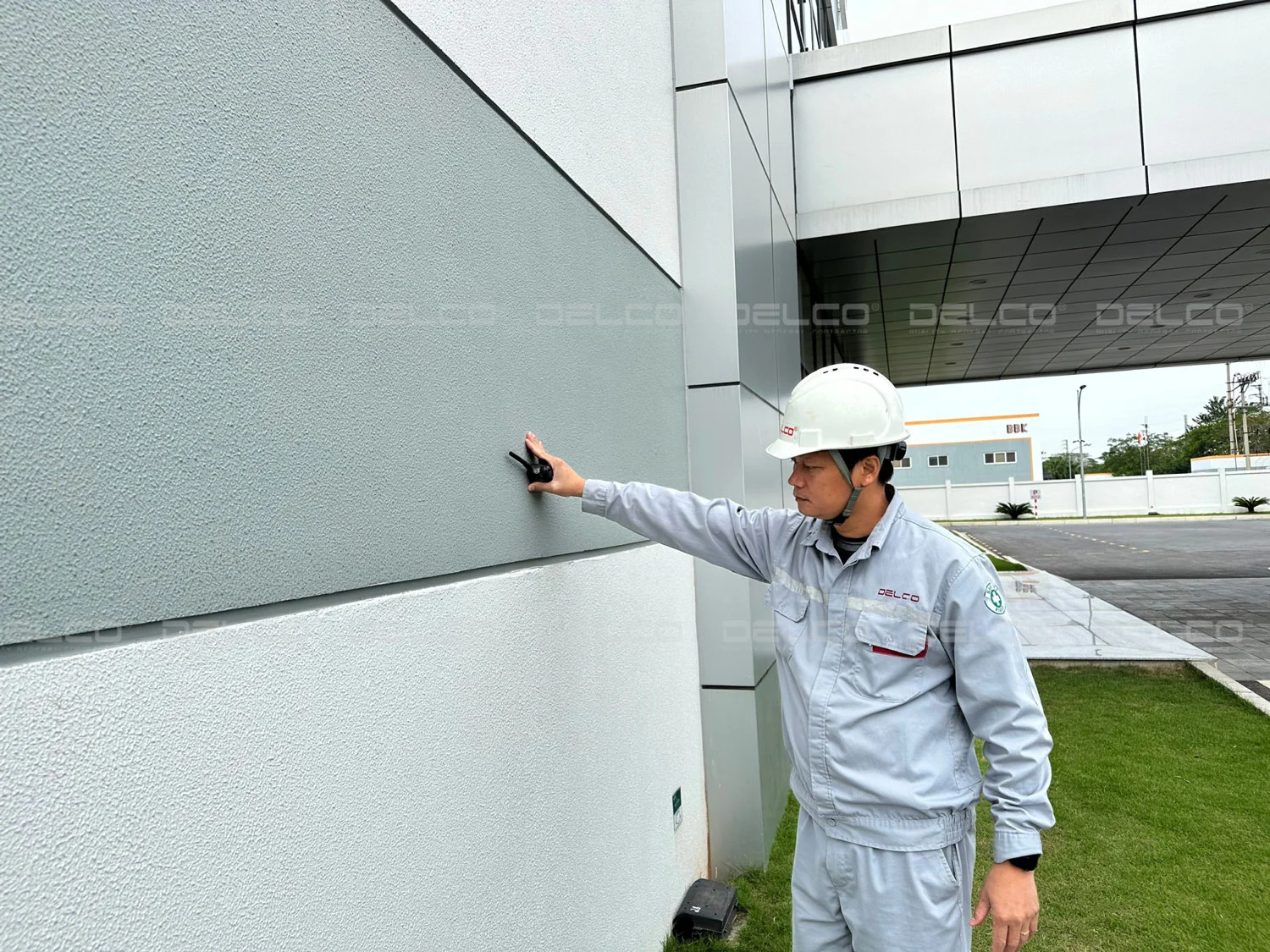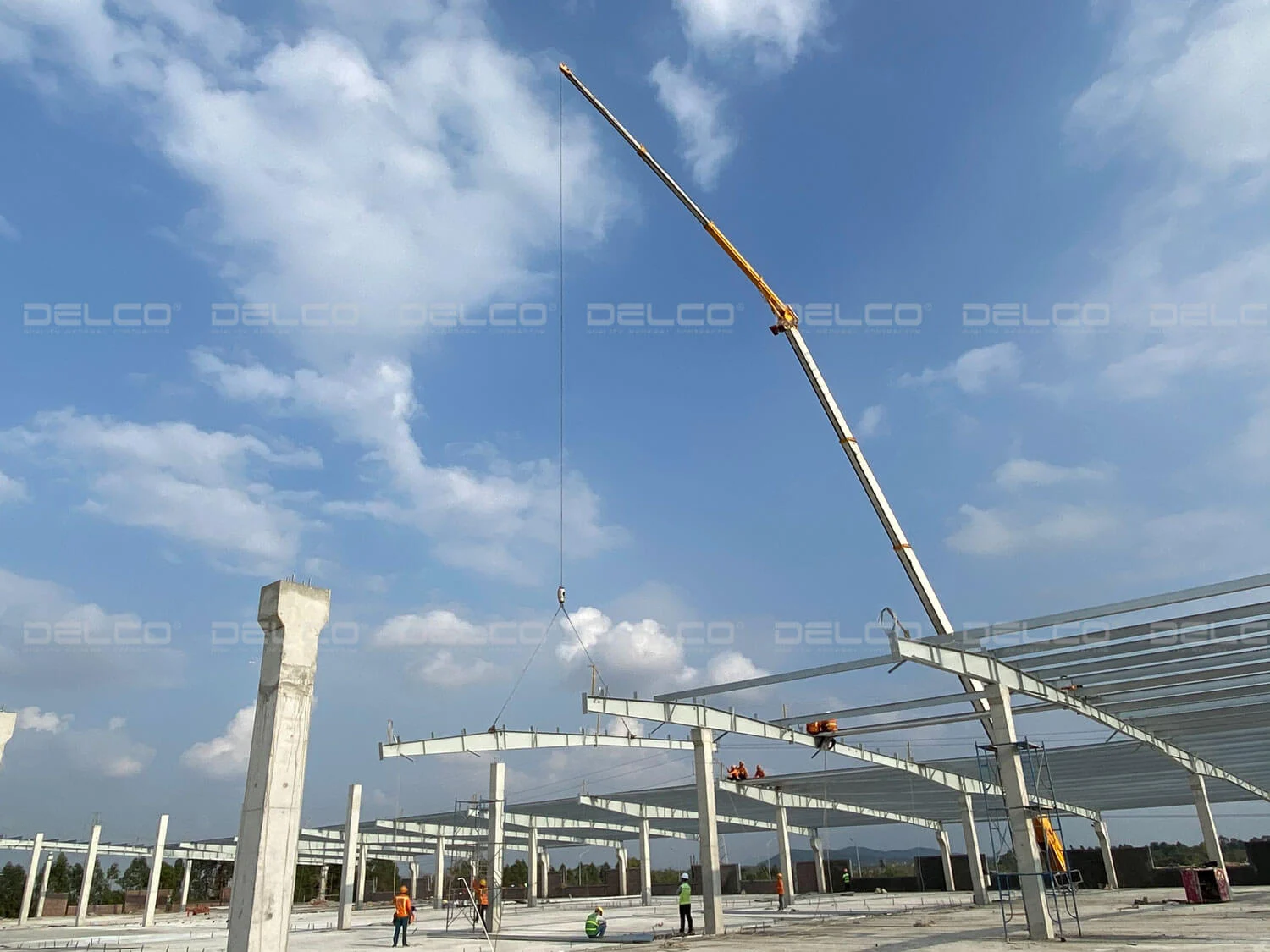To meet international standards such as ISO 14644 or GMP, cleanroom systems must be carefully designed in terms of cleanliness classification, traffic flow layout, HVAC systems, finishing materials, etc.
Identify applicable standards from the beginning
Each manufacturing sector has specific requirements for cleanliness levels and standards. Determining the appropriate standard early in the design phase is a critical step. Choosing the wrong cleanliness level—too high—leads to wasted investment; too low will fail to meet inspection requirements during operation.
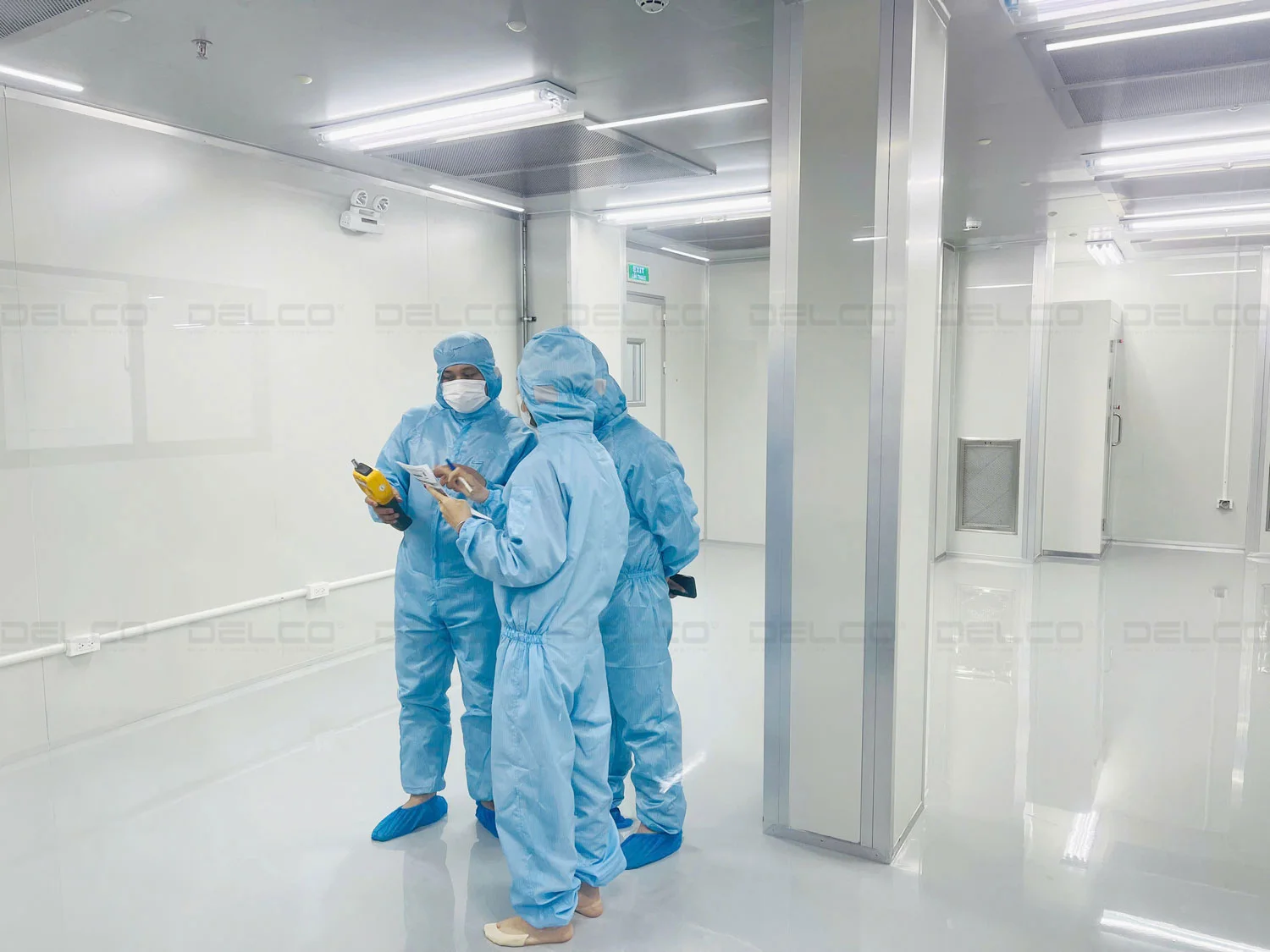
Cleanroom testing equivalent to Class 1000 at an electronics component factory where DELCO was the factory fit-out contractor.
The most commonly used standard is ISO 14644, which classifies cleanrooms from ISO 1 to ISO 9 based on the number of airborne particles per unit of air volume. Some projects still follow the American FED-STD-209E standard, which classifies cleanrooms from Class 1 to Class 100,000. Industries such as pharmaceuticals, medical devices, cosmetics, and food typically use GMP grading (Grades A, B, C, D), corresponding to cleanliness levels from highest to lowest.
See more: Key international standards in factory fit-out
Design a logical layout and traffic flow
Cleanroom layouts must ensure one-way movement to minimize the risk of cross-contamination. The movement paths for personnel, raw materials, finished products, and waste must be clearly separated and should not intersect.
Areas with higher cleanliness levels should be located in the center, surrounded by buffer (transition) zones to maintain positive pressure flowing outward. At transition points between different cleanliness levels, airlocks, buffer rooms, and changing rooms should be installed, with interlocking door systems that prevent both doors from being open at the same time. This helps prevent dust and microbes from entering the main production area.
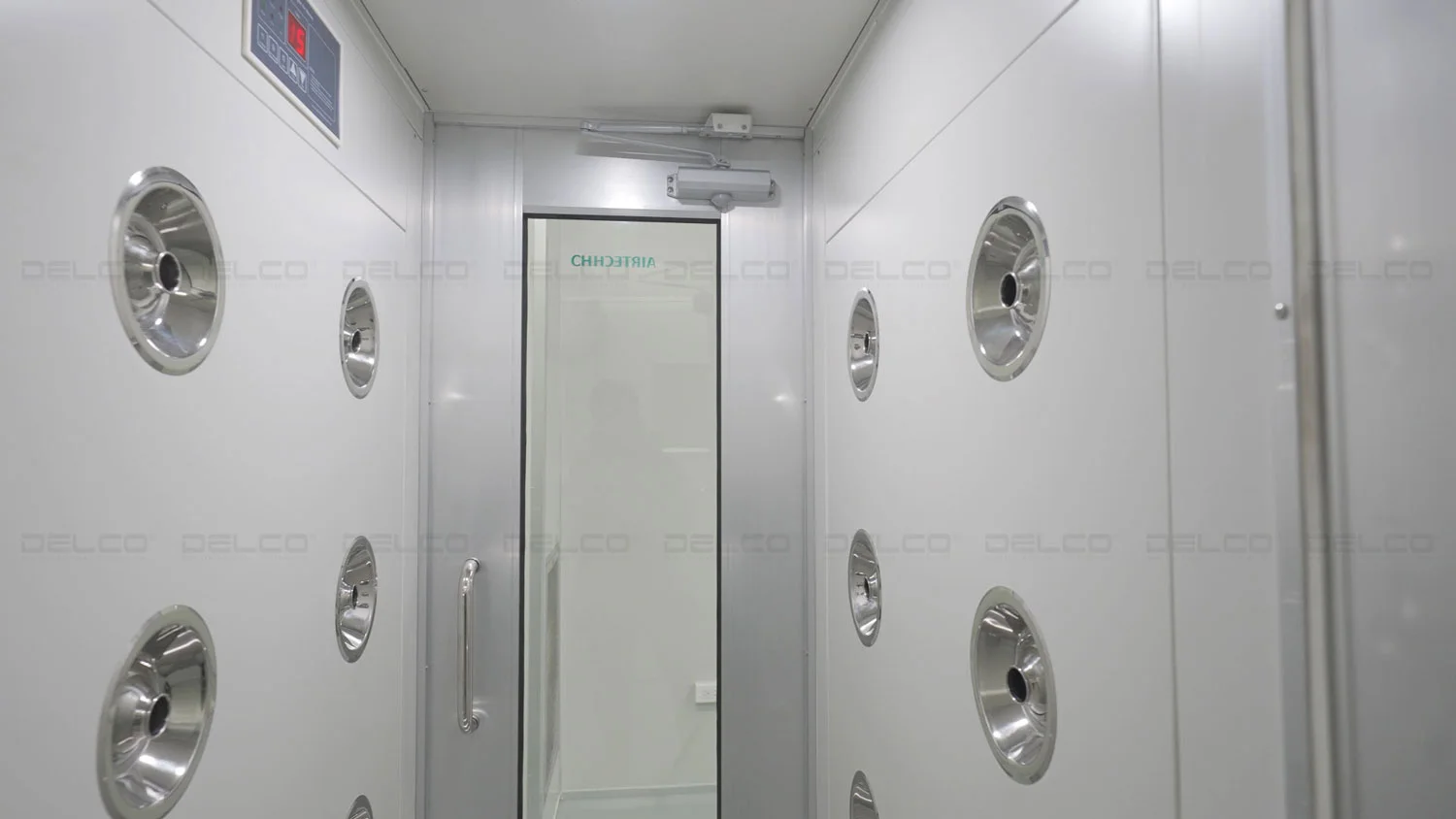
Airlocks and air showers at an electronics factory project in Bac Ninh, designed by DELCO, maintain a positive pressure differential of approximately +10 Pa to prevent dust from entering the cleanroom
HVAC system – The core element of a cleanroom
The HVAC (Heating, Ventilation, and Air Conditioning) system and pressure control are the most critical components of a cleanroom. They help control airborne particle levels, maintain stable pressure, humidity, and temperature, ensuring compliance with international cleanroom standards. HVAC systems must be carefully designed based on:
- Airflow rate, typically measured in air changes per hour (ACH), appropriate for each cleanliness classification;
- Room pressure, ensuring positive pressure between clean and less clean areas;
- Stable temperature and humidity as required by the manufacturing process;
- Air filtration, using HEPA or ULPA filters to remove ultrafine particles.
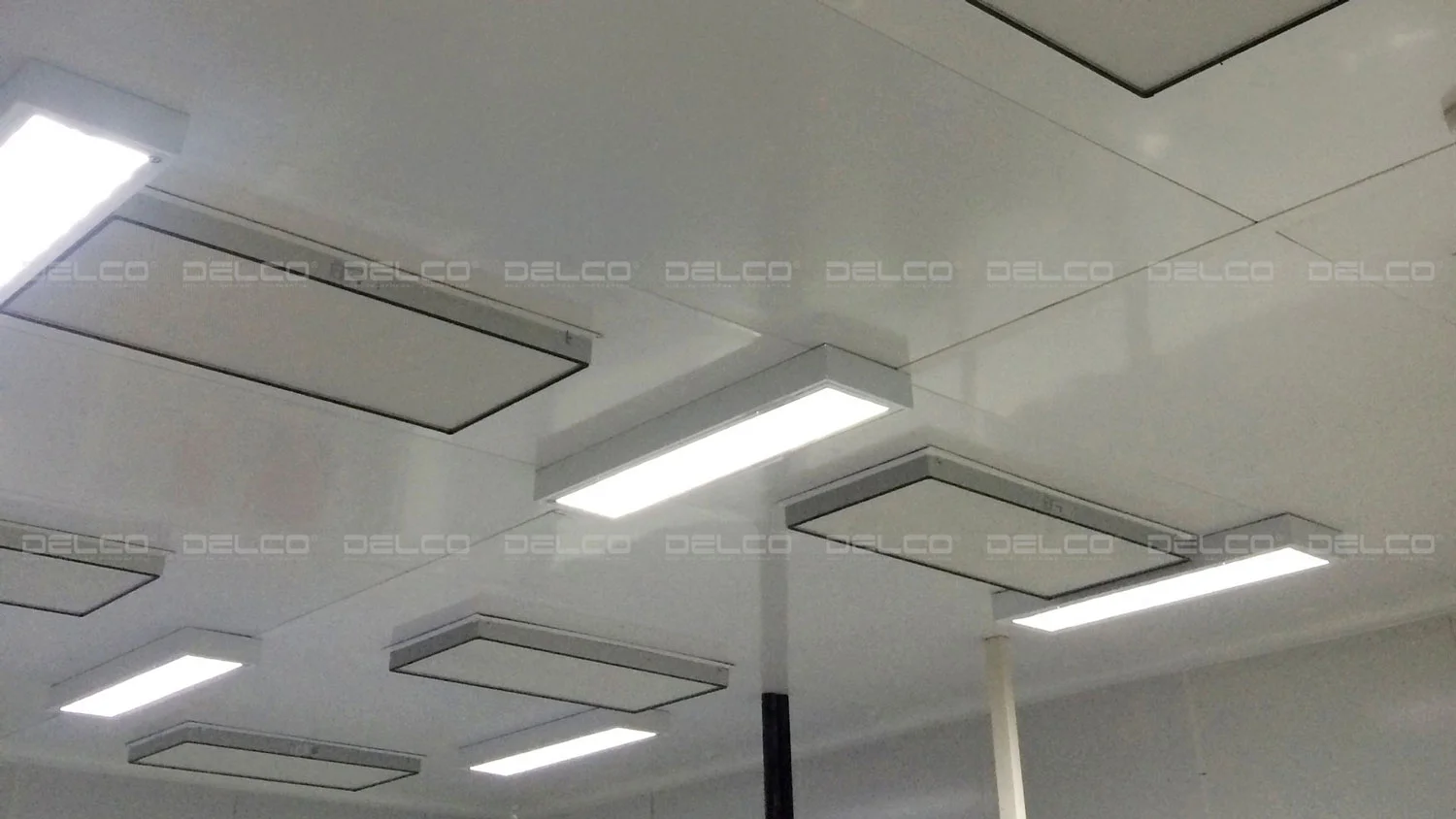
HEPA filter system at the Pham Nguyen confectionery factory, by DELCO as Design-Build contractor.
Choose appropriate finishing materials and equipment
Materials used in cleanrooms must meet the following criteria: non-shedding, antimicrobial, resistant to cleaning chemicals, smooth surfaces, and easy to clean. Common materials include:
- EPS, PIR, or PUR insulated panels for walls and ceilings;
- Vinyl flooring or epoxy coating; with an additional anti-static system for certain cleanliness levels;
- Specialized door accessories, corner trims, and silicone seals to close gaps and prevent dust accumulation.
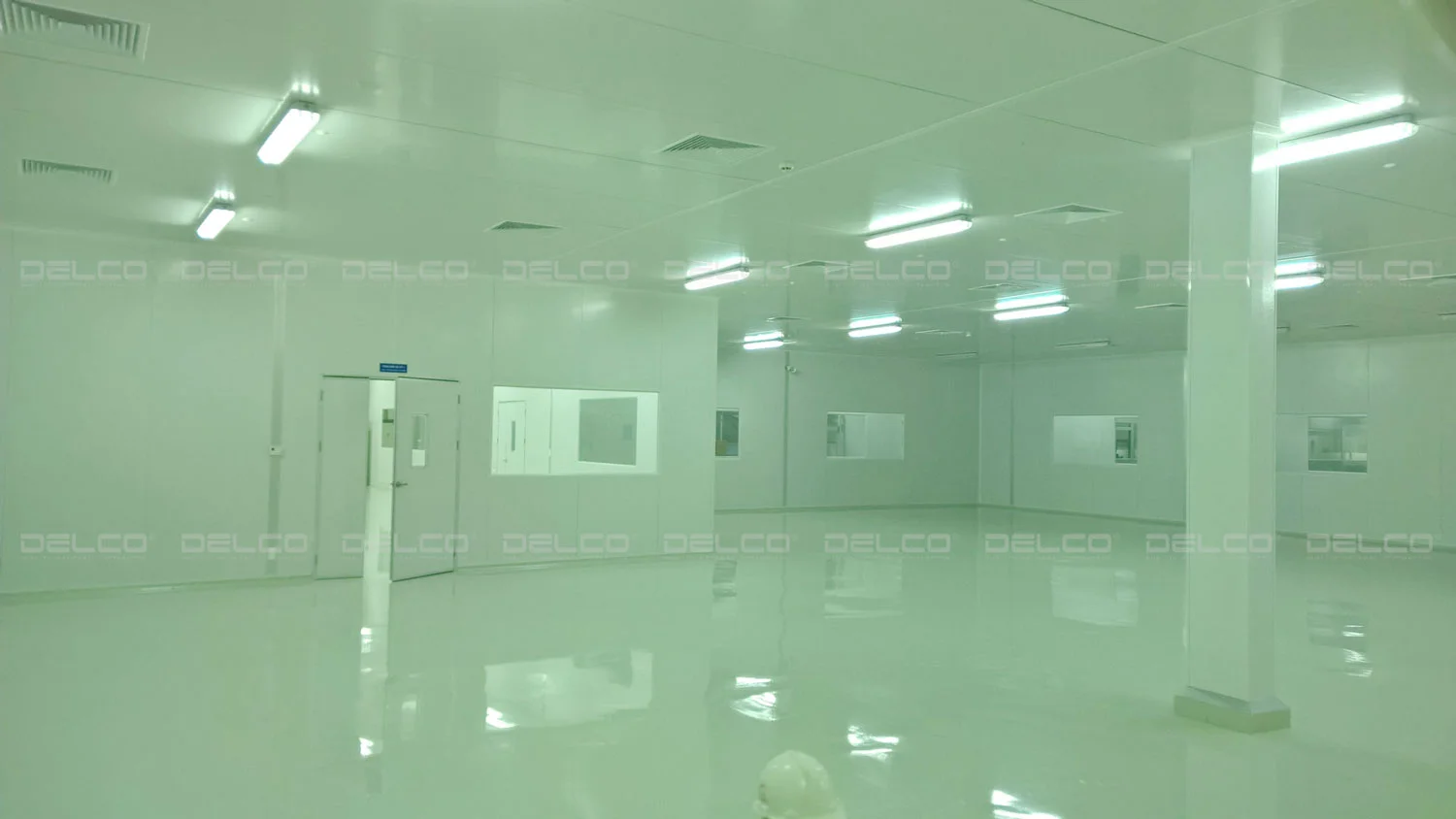
Panel walls and ceilings not only help meet cleanroom standards but also facilitate maintenance, cleaning, and daily operation.
In addition, cleanroom lighting must ensure adequate illumination (lux level) while minimizing heat emission and dust accumulation. Lights should be recessed, dustproof LED types meeting IP standards. All electrical components such as sockets, switches, and electrical cabinets should be neatly installed and meet IP65 standard or higher, suitable for production environments with strict requirements on hygiene and sealing.
Monitoring and control system
A modern cleanroom must be with comprehensive environmental sensors and monitoring devices. Parameters to be continuously controlled include: temperature, humidity, differential pressure, airflow rate, and airborne particle count. All data must be continuously recorded, retrievable when needed, and integrated with an alert system that notifies users when values exceed the allowed thresholds. This is a mandatory requirement in strictly regulated industries such as pharmaceuticals and medical devices.
Xem thêm: Experience in cleanroom fitout for rental factories and technical considerations
Xem thêm: Integrated factory fit-out process from design to construction in Vietnam
Xem thêm: What is a clean room? Clean room standards applied in Vietnam


